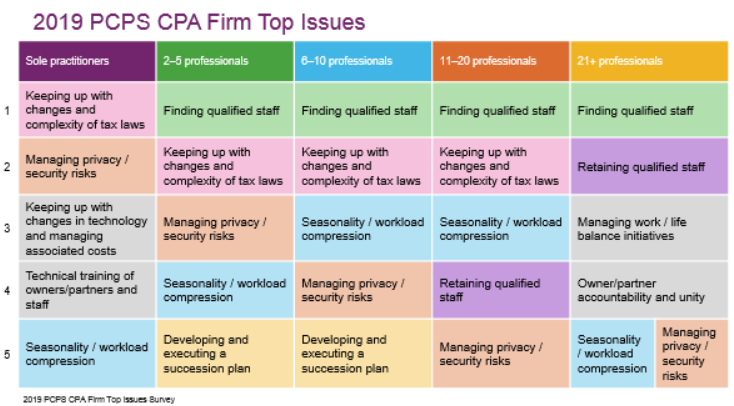Following a suggestion from my friend Thea Foster I attended the AICPA Engage conference in Las Vegas from Monday 10 June to Thursday 13 June. The conference offered hundreds of sessions across technical and non-technical topics and was attended by about 4,000 accountants, mostly from the USA. As an accounting firm coach, mentor and consultant it is part of my job to look for ideas that will help my clients so I thought it would be good to see first hand what firms in the USA are doing.
I attended as many sessions as I could and did the rounds of the exhibitors to see if there was anything on offer that might be of interest to Australian accountants. The first sessions started at 7am and the last finished at 7pm so it was a big four days!
Here are some observations:
The top challenges facing firms in the USA are pretty much the same as those in Australia.
Barry Melancon and Bill Beeb, CEO and Chairman respectively of the AICPA presented the results of a survey of US firms. (I met and chatted briefly with each of Barry and Bill and they are clearly very passionate about the profession.) The survey results (based on 1,203 responses from mostly small firms) are summarised in the graphic below.

It is no surprise that people related issues are prominent as they regularly come up in conversation with firm owners in Australia. Perhaps the one issue that I see as a little different between the USA and Australia is “Seasonality / workload compression”. You can see it made the top five issues for firms of all sizes in the USA. I spoke with a number of US accountants about this and it seems there is a tighter deadline for the lodgement of tax returns and from around 14 Feb to the end of April is a very busy tax season indeed. As is the case in Australia some firms seem to have got it worked out pretty well but I think these firms in the USA represent a small percentage of all firms.
In a separate article I have written about different types of training that I’d expect to see in firms, some of which of course is directed towards keeping up with changes and complexity of tax laws. In the USA they have a lot of state based taxes in addition to federal taxes and for firms with clients across the country this is challenging.
Australian firms are ahead of US firms in respect of flexible work policies.
This was confirmed for me by Jennifer Wilson one of the leading people consultants to US firms. Most Australian firms are now quite advanced in this regard.
The “family office” concept is big in the USA
I’ve written a separate article on this as I reckon there is an opportunity for Australian firms to do more in this space.
USA Accountants are very client focused and work hard just like Australian accountants
I believe this is a common theme around the world – accountants really care about their clients. I met a plethora of US accountants who exemplified this ethos.
There is a lot of discussion about advisory services
Just as is happening here there are many people exhorting accountants to do more than compliance work with their clients. They use slightly different language but the ideas are the same.
The AICPA is very forward looking and is investing a lot of time and money in helping accountants stay relevant.
For example, in conjunction with many of the top 100 firms they have raised $40m to go towards developing tools for the “audit of the future”. They also have a subsidiary, CPA.com which focuses on some technology elements.
The take up of cloud accounting applications lags behind Australia
I think it is pretty well understood that this is the case but the sense I have is that there is a lot of momentum and the take up is accelerating. I don’t have data to support this, just a feeling I got from conversations with US accountants and software vendors. One of the key features of cloud accounting packages is the bank feeds and there is no doubt this is much more challenging in the USA. They have a very fragmented banking system with a huge volume of banks across the country and in some cases quite dated platforms. It takes a long time to implement feeds for them! While the big four banks have copped a hiding on various fronts here, the fact that there are a small number of financial institutions has meant it is much easier for the software vendors in Australia.
